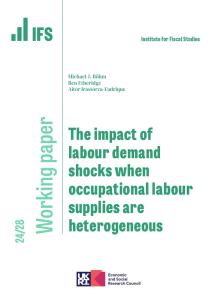If you happen to be a 66-year-old man, I’ve got some good news. There’s a one in four chance you’ll live another twenty-five years. But I have some bad news, too. There’s a more than one in four chance you won’t make it into your eighties. A few of you will live to be 100. Some won’t get as far as 70.
Even if individually we have some sense as to how likely we are to be at either end of that spectrum, that’s an awful lot of uncertainty, compounded by the fact that on average we tend to be rather pessimistic. People in their sixties typically underestimate their life expectancy.
That might be one reason why we are so reluctant to purchase annuities — that is, to convert accumulated pension pots into fixed incomes payable until death. Since the annuitisation of pension pots stopped being compulsory back in 2015, there has been a collapse in the number of annuities bought of something like 90 per cent. Hopelessly low payments from annuity products don’t help. The typical £100,000 pot will buy an annual income linked to inflation of only £4,000 or so.
As traditional occupational pension provision has effectively come to an end in the private sector, where barely one in ten people are now members of such schemes, this uncertainty over lifespan is starting to matter more and more. The state provides a pension of about £200 a week, but it no longer offers anything related to previous earnings. For most of us, we are left to save in individual savings pots and then to try as best we can to work out how to manage that uncertainty right through retirement.
Enjoy the early years of retirement and risk running out of cash if we are lucky enough to live a long time? Or sit on the cash and risk missing out on what we could have enjoyed if we die early? That’s just one of the dilemmas facing us — and policymakers — as we grapple with a situation we never intended to reach.
The present generation of pensioners is, on average, doing fine. More than fine, in fact. Better than any previous generation, holding most of the country’s wealth and often enjoying a standard of living higher than they experienced during working life.
But that fact shouldn’t blind us to another fact. Subsequent generations risk doing a whole lot worse. Most of the things that came together to put today’s pensioners in such a good place have gone. Occupational pensions? Gone. High and rising home ownership? Gone. State earnings-related pensions? Gone. Ever-rising earnings during working life? Gone. Decent real rates of return on savings and investments? Gone. Most of all, whether it’s the risks associated with how long we’ll live after we retire or risks that investments will underperform while we are working, any semblance of risk-sharing is also gone.
Some of this we have dismantled accidentally. Nobody set out to destroy occupational pensions, but destroy them we did, by loading guarantees and unrealistic expectations into an environment of falling investment returns and rising life expectancy. More general economic failure has hit younger generations. Ever-falling interest rates are the other main culprit, reducing returns to any savings we manage to set aside and pushing up house prices to the benefit of those who already own them and to the cost of those who do not.
This last change could turn out to be the biggest of them all. At present, the vast majority of people reaching pensionable age own their own home, usually with the mortgage paid off. Most of the rest live in social housing, generally after a lifetime of low incomes. For this latter group, incomes in retirement might not be high but they might not be much, if any, lower than incomes during working life. Look to the future, though, and private renting — with less secure tenancy and higher rents — is becoming ever more prevalent, and not only among the young. Already more than one in ten of those aged 50 to 60 is a private renter. That fraction has doubled within a decade and will rise further. A life in retirement with private rent to pay is unlikely to be a comfortable one and for many will mean falling back on means-tested housing benefit.
These are all big potential problems, but they remain largely problems for the future. Only gradually will more and more of us reach pension age without an occupational pension, without a home we fully own, without a way of ensuring we are comfortably off for what might turn out to be a long retirement. Only gradually will the consequences of shifting all of the risk away from employers, government and insurance companies on to individuals become apparent. Because this is slow-moving, and in the future, and because things look hunky dory for many of today’s pensioners, and because auto-enrolment in workplace pensions appears to have been so successful, getting political focus and expenditure of political capital on these complex, poorly understood and hard-to-solve issues is inevitably difficult.
Yet if we are to avoid sleepwalking into a future much worse than the present, we need to start acting now. That is why, in association with the Abrdn Financial Fairness Trust, we at the Institute for Fiscal Studies are embarking on a significant new review of the pension system. Nearly 20 years after Adair Turner’s (Lord Turner of Ecchinswell’s) groundbreaking commission led to higher state pensions, a rising pension age and automatic enrolment, a huge amount has changed. We need once again to look to the future. Because one thing is for sure. The experience of the past 30 years will be no guide whatsoever to what we can expect over the next 30.
This article was first published in The Times and is reproduced here with kind permission.









